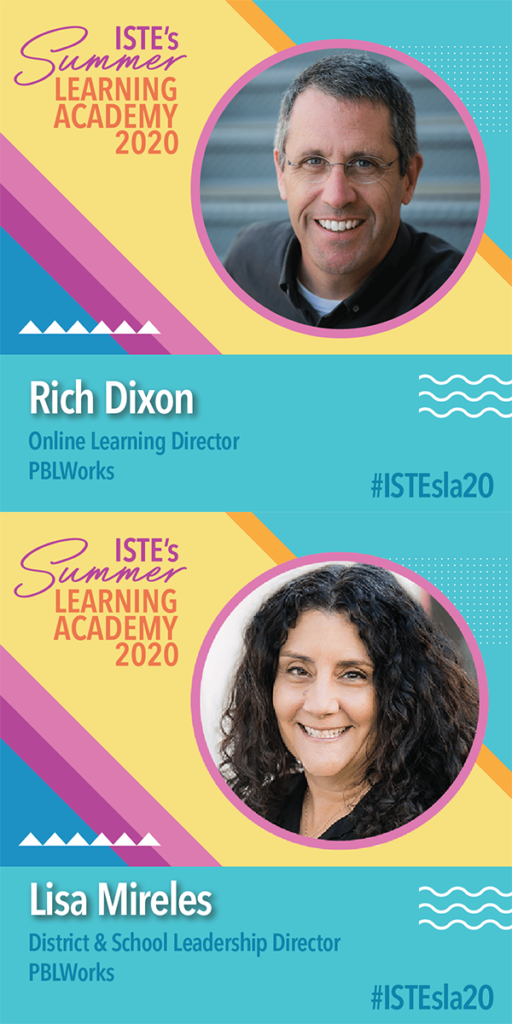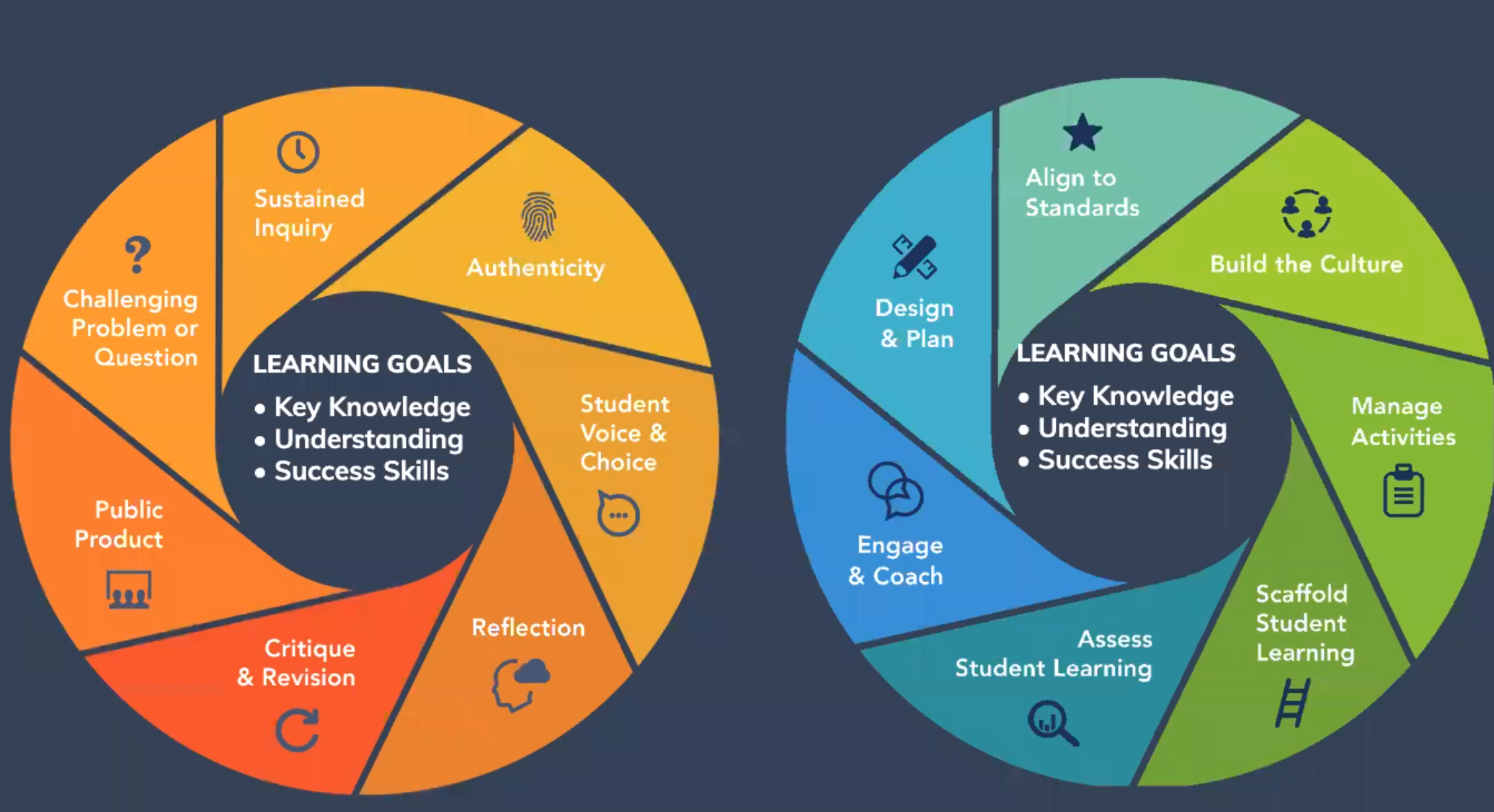Facilitating Educational Equity Online through PBL – #ISTEsla20 Wk 3 Day 2
The following post has been completed as part of my personal reflection as I work through the ISTE Summer Learning Academy #ISTEsla20 Any images, tables, or direct quotes (as indicated with the appropriate formatting) are provided from the specific course or webinar and can be credited to: ISTE Summer Learning Academy. (2020). https://summerlearningacademy.iste.org/

Week 3 – Day 2 is one I’m hoping will hold some helpful resources for my son’s school who is focused on PBL for their students. I was first introduced to PBL in 2012 when I found PBLU and have been trying to learn and incorporate more ever since. This webinar is facilitated by Rich Dixon and Lisa Mireles and is described as follows:
“Looking to try project-based learning (PBL) when teaching remotely or in blended environments? Join us as we explore how the PBL teaching methodology promotes student-centered online learning that keeps students engaged with high-quality outcomes. This interactive session was developed using survey results from educators who identified their most common problems facilitating PBL online.”
Main Takeaways
- PBL
- an instructional methodology in which students work together, over an extended period of time, to solve a real-world problem or investigate a complex question
- students produce a presentation to share with an authentic public audience

- How can PBL support equity?
- Educational equity is where each child receives what they need to develop their full acadmic & social potential
- 1. PBL promotes high expectations for ALL students
- 2. PBL honours diverse backgrounds, skills and experiences
- 3. PBL transforms and redistributes power in the classroom
- Tips/resources for implementing PBL online
- challenges include engagement, finding meaningful and relevant project ideas, creating a learner-centered environment, supporting individual students learning needs
- start with driving questions that are engaging, open-ended, aligned to learning goals
- track student engagement with “pulse checks”, tracing student interaction and using online protocols
- set clear expectations for end goal and ongoing work by providing exemplars, visual cues and ongoing specific feedback
- foster project engagement with students by co-creating an outline of tasks, subtasks and co-prioritizing next steps
- vary input by walk & talks, collaboration boards, individual work time
- use project management tools to manage groupings, improve communication and share resources
- PBL
Questions
- Do your students have the privelage of having connectivity, similar scheduling, and parent assistance to connect with peers outside of school for collaborative PBL?
General PD Thoughts
- When planning for your learners needs, remember that text on slides may not be clearly visible if closed captioning is used. I am a regular user of CC and often have to pause, turn off CC, read the slide text, then turn everything back on to proceed.
- I was disappointed that much of this presentation came across as a product pitch for PBL Works. I understand that that is obviously their background but the webinar description did not openly disclose that this was a discussion on how to facilitate educational equity online through the use of PBL Works. It seems like there are great resources but it just wasn’t what I expected.
- Today’s webinar shared the following ed tech tools: PBL Works, Flipgrid, Google Keep, Padlet, Learning Keeps Going, Project Pals, Headrush Learning, Student Corner, Spinndle,
- Thank you to Rich and Lisa for sharing!
Read all of the #ISTEsla20 posts:
- Microcourses
- Week 3
- Week 2
- Week 1
6 thoughts on “Facilitating Educational Equity Online through PBL – #ISTEsla20 Wk 3 Day 2”